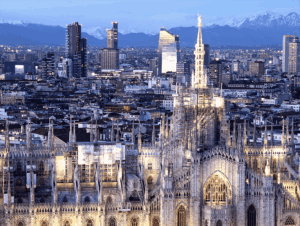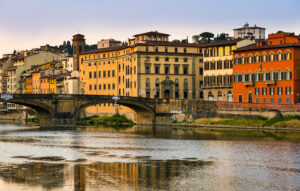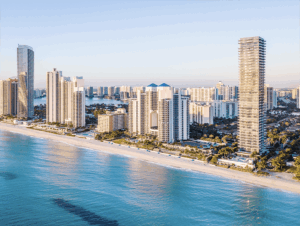Hospitality Investment Surge Reshapes Market Dynamics
Lake Como has emerged as Italy’s second-largest hospitality investment market, capturing 19% of the country’s total luxury accommodation capital flows in the first half of 2025. With hospitality investments reaching €1.3 billion nationwide—a 63% increase from 2024—Como’s prominence reflects a fundamental shift in how international capital views Italian luxury real estate markets.
The concentration of hospitality investment in Como represents more than tourism appeal; it signals a sophisticated understanding of scarcity economics in luxury real estate. As prime lakefront properties transition from private residences to institutional hospitality assets, the remaining residential inventory experiences dramatic value appreciation that far exceeds traditional real estate metrics.
Rome leads Italy’s hospitality investment activity with a 25% market share, but Como’s 19% capture rate is remarkable given the lake’s limited geographic footprint compared to the capital city. This concentration creates intense competition for the finite number of properties suitable for luxury hospitality conversion, driving acquisition premiums that cascade throughout the broader residential market.
Institutional Capital Drives Asset Transformation
The entry of blue-chip institutional investors demonstrates Como’s evolution from a regional luxury market to a global investment destination. LVMH’s acquisition of Castello di Urio for transformation into a Belmond-operated luxury hotel exemplifies how fashion and luxury conglomerates view Como properties as strategic assets rather than mere hospitality investments.
This institutional validation creates ripple effects throughout the property market. When global luxury brands invest in Como assets, they effectively endorse the location’s long-term value proposition, influencing private buyer behavior and pricing expectations. The presence of brands like LVMH also attracts complementary luxury services and amenities that enhance the overall market appeal.
Value-add capital continues targeting Como properties with strong repositioning potential, accounting for 45% of hospitality investment strategies. This approach reflects investor confidence in their ability to extract premium returns through property enhancement and brand positioning, rather than relying solely on location premiums.
Geographic Scarcity Premium Economics
Como’s luxury real estate market operates on extreme scarcity principles that create dramatic pricing differentials based on proximity to water access. A waterfront villa in Cernobbio commands approximately $11 million, while an identical property one street inland costs $3.9 to $5.5 million—a premium of 100% to 180% for water access alone.
These pricing gaps reflect the finite nature of lakefront inventory and the conversion of prime properties to hospitality use. Many historic lakefront estates have been repurposed as hotels, restaurants, or institutional facilities, permanently removing them from residential inventory. Villa d’Este and Villa Passalacqua—named the world’s best hotel in 2022—exemplify how the hospitality sector absorbs the most desirable properties.
The scarcity extends beyond waterfront access to suitable development sites. Properties half a mile up the hillside from Cernobbio cost approximately $3.3 million, while similar lakefront houses at Como’s northern end command $5.5 million, demonstrating how geography and accessibility create distinct pricing tiers within the same luxury market.
Foreign Capital Dominance and Currency Arbitrage
International buyers account for 60% of total investment across Italy’s commercial real estate market, with foreign capital particularly concentrated in luxury hospitality and residential sectors. American buyers have notably increased their Como presence, leveraging favorable dollar exchange rates to acquire properties that appeared expensive to European buyers during periods of euro strength.
The foreign buyer concentration reached 70% to 80% of sales in pre-pandemic periods, with traditional buyers from Russia, the United Kingdom, Germany, and Switzerland. Current market dynamics show North American buyers filling gaps left by reduced Russian and British activity, demonstrating how geopolitical shifts create arbitrage opportunities for different investor nationalities.
Currency fluctuations create additional complexity in pricing dynamics. Properties marketed to American buyers benefit from dollar strength, while euro-denominated assets appear more attractive to Swiss and German buyers during periods of currency stability. This multi-currency buyer base provides market resilience but also creates pricing volatility based on exchange rate movements.
Infrastructure Constraints Limit Growth Potential
Despite substantial capital inflows, Como faces significant infrastructure limitations that constrain market expansion and create additional scarcity premiums. The region’s road network consists of only two routes connecting Como to Bellagio and the upper lake, creating severe traffic congestion during peak tourist periods that affects both property accessibility and guest experience.
Water traffic presents similar constraints, with boat rental operators increasing 1,217% over the past decade while lake capacity remains fixed. This infrastructure deficit means that luxury properties with private water access or helicopter landing capabilities command additional premiums beyond location-based pricing.
The Variante della Tremezzina construction project, begun in 2020 to improve connectivity between Como and Menaggio, remains incomplete with uncertain completion timelines. These infrastructure delays create investment risks for hospitality operators while simultaneously protecting existing luxury properties from increased competition through improved accessibility.
Sustainability Challenges and Investment Risk
Environmental pressures increasingly influence investment decisions and property valuations in the Como market. Rising water temperatures, unregulated fishing, and intense boat traffic threaten the lake’s ecosystem, while climate-related events including landslides and flooding have affected several municipalities since 2020.
A proposed luxury resort in Torno municipality, spanning 29,000 square meters of forested land, has generated significant opposition due to environmental concerns and hydrogeological risks. Such controversies highlight the tension between luxury development demand and environmental sustainability, potentially limiting future development opportunities.
Luxury hospitality operators are responding with sustainability certifications and environmental programs. Il Sereno achieved ClimaHotel certification within two years of opening, while Lario Hotels Group became a Benefit Corporation in 2021, demonstrating how environmental responsibility is becoming a competitive advantage in the luxury market.
Rental Yield Arbitrage and Investment Returns
The luxury hospitality market generates substantial rental yields that justify premium acquisition pricing. Prime Lake Como properties achieve average rental rates of $450 per night, with ultra-luxury properties like Villa La Cassinella commanding $109,000 per week for peak season rentals.
These rental rates create investment arbitrage opportunities for buyers who can optimize property utilization between personal use and rental income. Properties in Como town center can generate year-round rental income, particularly appealing to German, Dutch, and English buyers who combine personal use with investment returns.
The rental market’s strength also supports property valuations by providing income justification for high acquisition prices. Buyers can model investment returns based on rental yield potential, making expensive acquisitions financially viable through hospitality income generation.
Market Outlook and Strategic Positioning
The convergence of limited supply, institutional validation, and strong rental demand positions Como’s luxury real estate market for continued premium growth. Hospitality investment momentum is expected to maintain throughout 2025, supported by numerous repositioning opportunities and Como’s diverse destination portfolio.
However, market sustainability depends on addressing infrastructure constraints and environmental challenges that could limit long-term growth potential. Properties that can demonstrate both luxury positioning and environmental responsibility are likely to command the highest premiums as sustainability becomes increasingly important to luxury travelers and investors.
The ongoing transformation of historic properties into luxury hospitality assets will continue reducing residential inventory while validating premium pricing for remaining properties. Investors who understand these scarcity dynamics and can navigate regulatory and environmental challenges will benefit from Como’s evolution into a premier global luxury destination.



